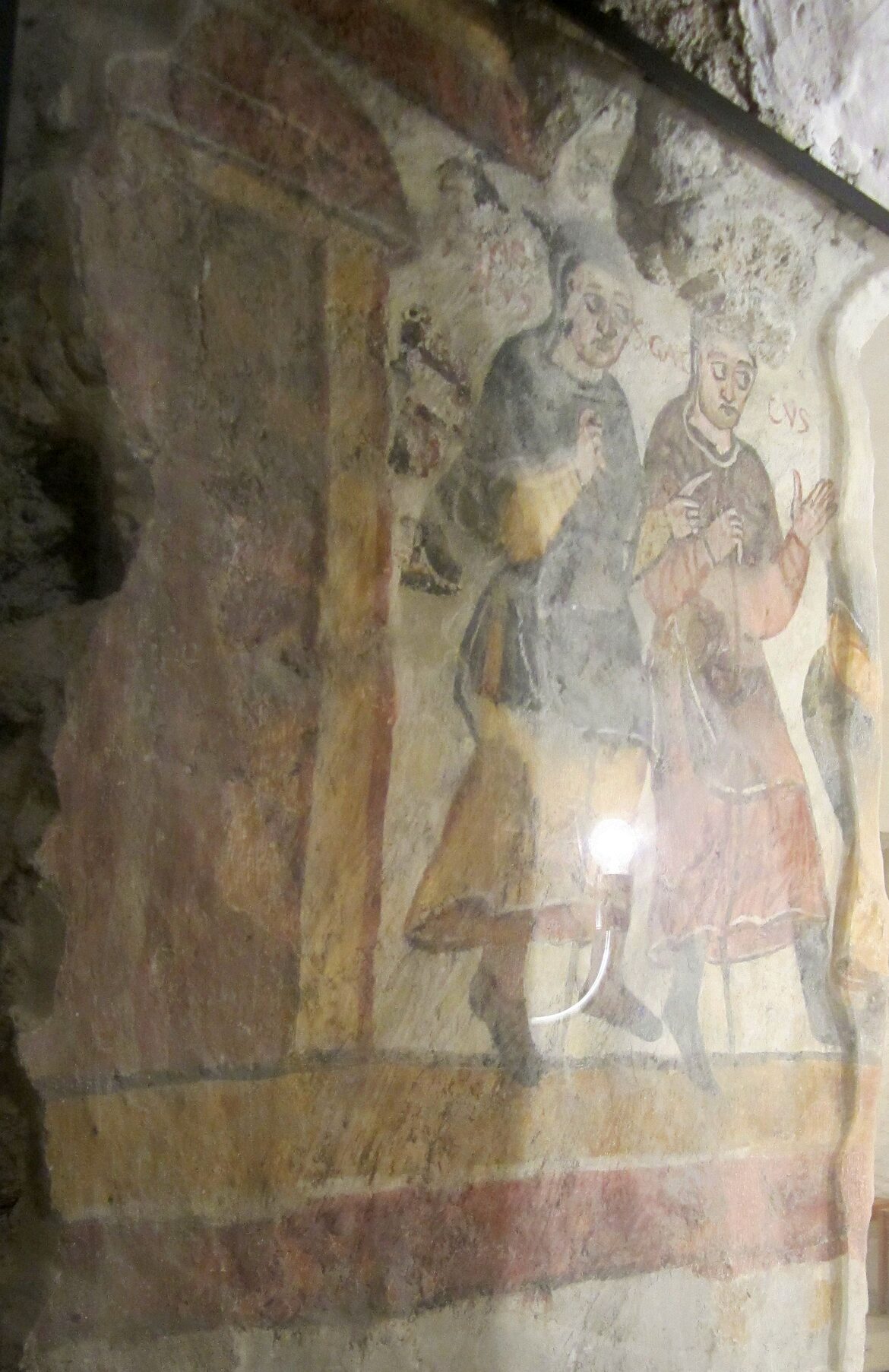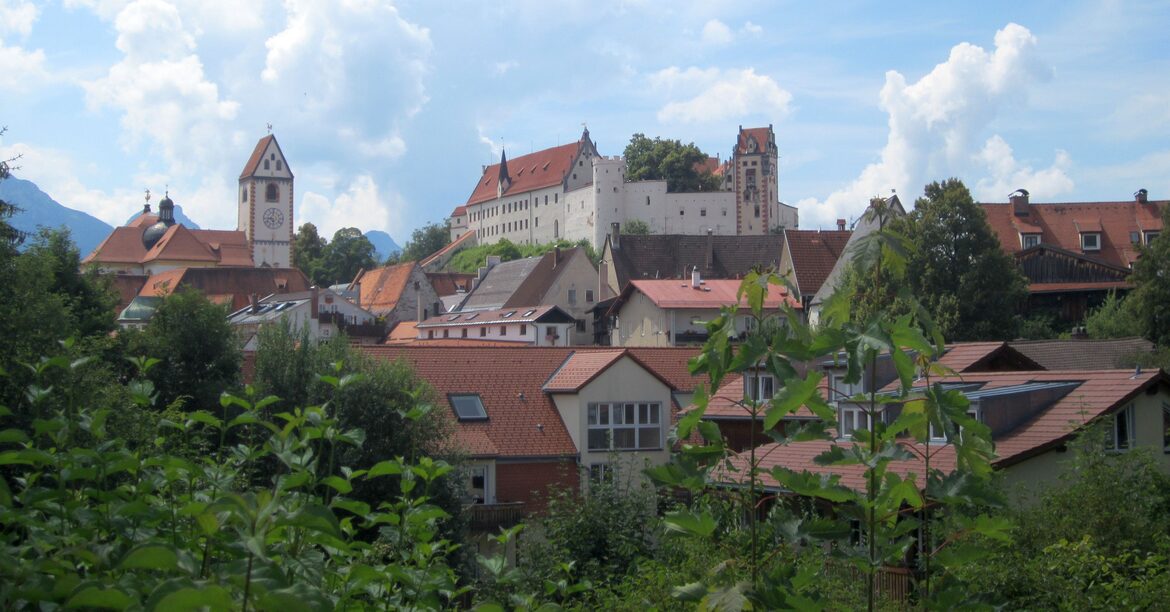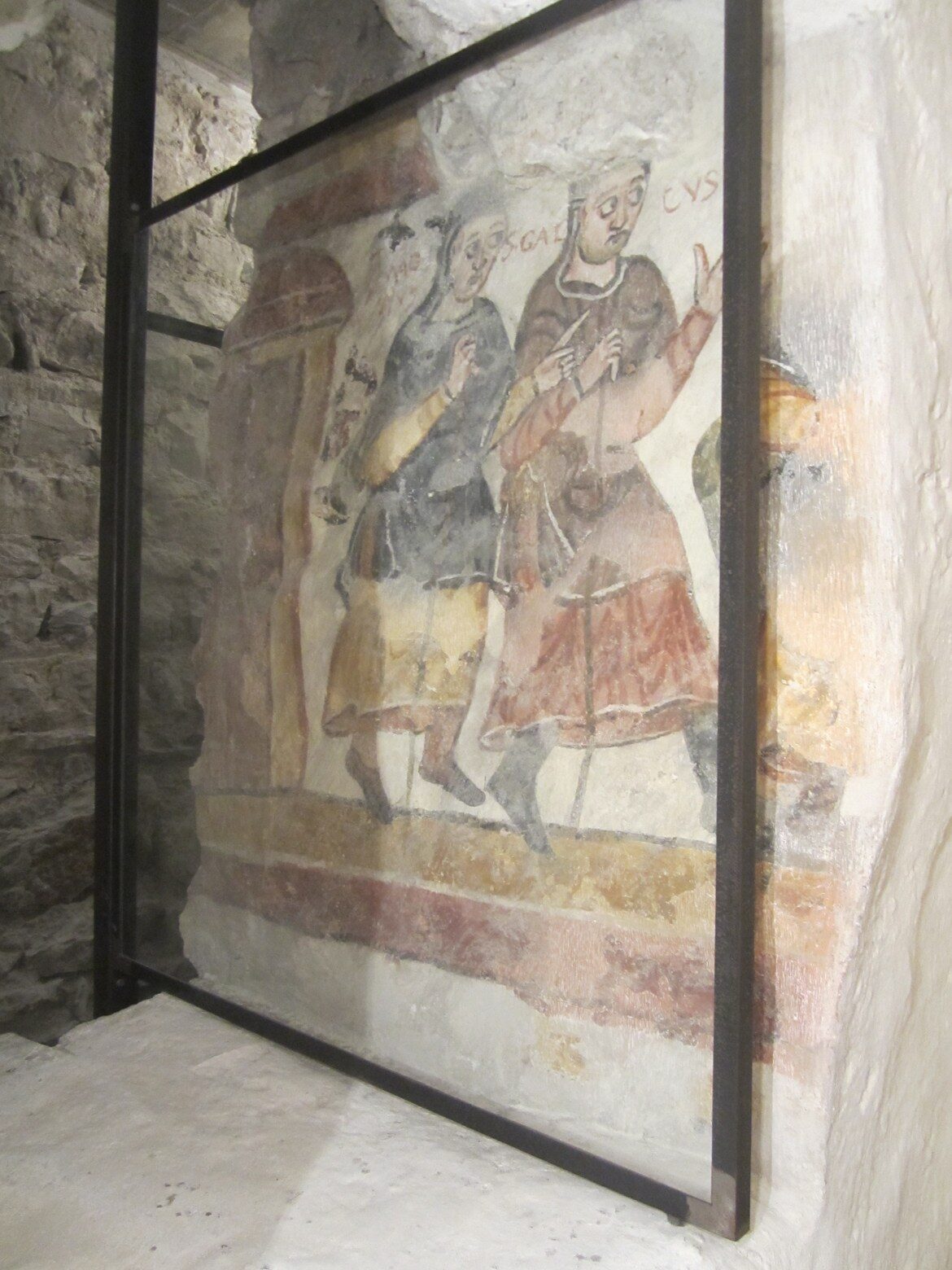- Grüß Gott Aus Füssen/God`s greetings from Füssen
- The Life of Blessed Seelos
- Seelos Baptismal Church:St.Mang
- Seelos Events Worldwide
- Seelos News Archive 1 (2008/2009)
- Seelos News Archive 11(2016/17)
- Our Lady of the Mountains Shrine-Füssen
- Augsburg
- Munich/München
- Altötting
- St Peter & St Paul Shrine,Cumberland
- Seelos Shrine/St Mary`s Assumption Church-New Orleans Photos
- U.S. Seelos Pilgrimages
- Claudia Rosenthal-English Seelos Presentation(Deutsch)
- MASS TIMES 2024
- Contact-Prayer Requests
St Mang Basilica
Where Blessed Seelos was baptized the day of his birth, was confirmed, made his 1st confession and 1st Holy Communion and where he served regularly.
St. Mang Basilica was built by the Allgäu architect, Johann Jakob Herkomer (1652-1717). It took him 16 years to complete. He succeeded in turning the medieval Basilica into a Baroque Church based on Venetian models that was intended to be an architectural symbol of the veneration of Saint Magnus. The entire church represents an enormous reliquary.
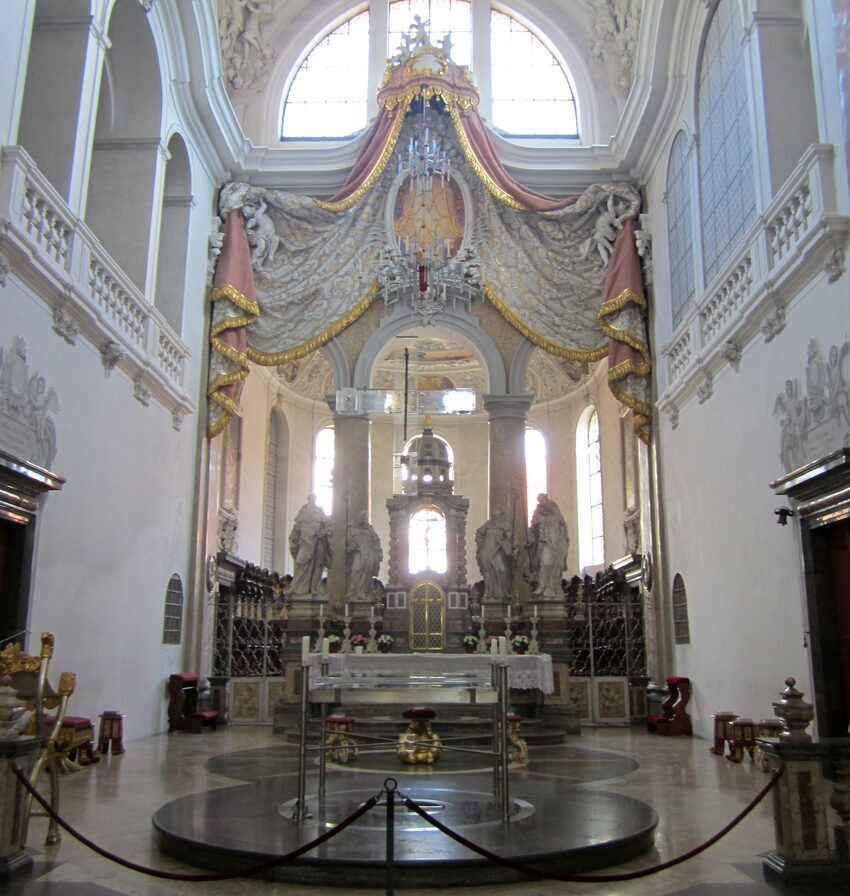

The main altar
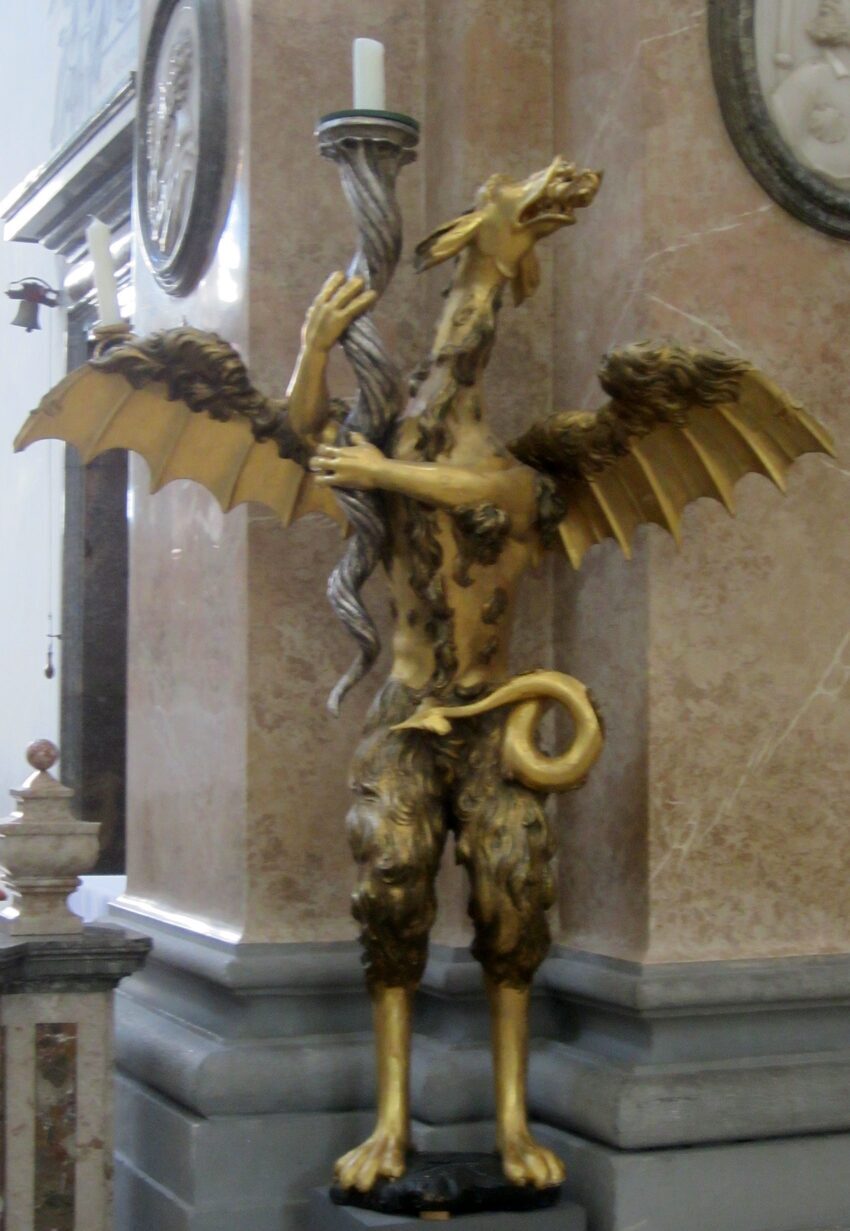

To each side of the main altar is seen a dragon figure. This is to represent pagans. St. Mang converted the pagans in this area and brought them to the light of Christ. Hence each dragon is holding a candle to represent Christ, the light of the world.
On the right hand side of the church, next to the sacristy is the statue of Our Lady of Füssen:
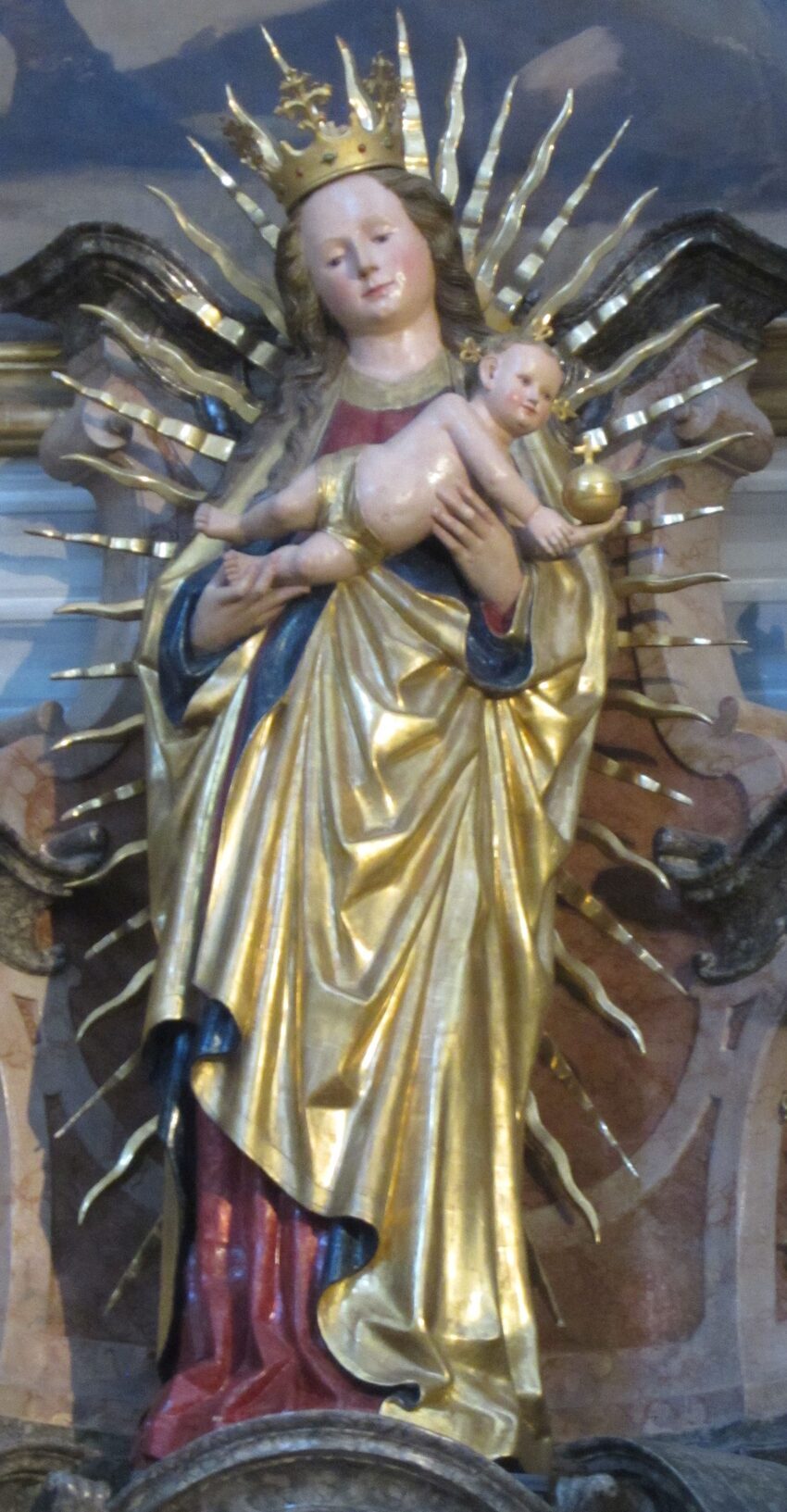

The Church is full of paintings and statues and also has a "Theatrum Sacrum". This was designed by the artist Erwin Wiegerling. It is one of the few churches outside of Rome which can say it has this facility. It is based behind the Statue of Our Lady in the Marble Chapel.
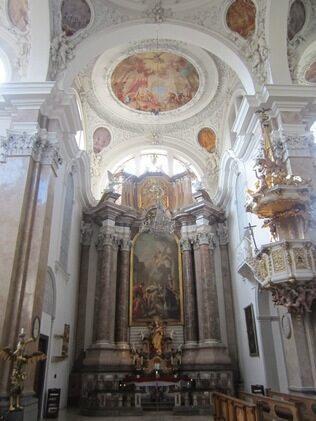
It replaces the Stations of the Cross in the town. However, St. Mang does have its own Stations of the Cross. They are based on the Frau am Berg Kirche (Our Lady of the Mountains Church) on the Calvary Mountain (Kalvarienberg).These were built by a priest of St. Mang called Johann Baptist Graf (1802-1862) against the wishes of the Bishop of Augsburg and the people of Füssen. He built them during the 18th century to bring people back to God when the secularisation period was prominent.
A monument has been built on the Kalvarienberg in honour of Father Graf who was parish priest in 1832.The work was started in 1837 and finished in 1862.
When you move along from the Theatrum Sacrum, you come to the year-round crib:
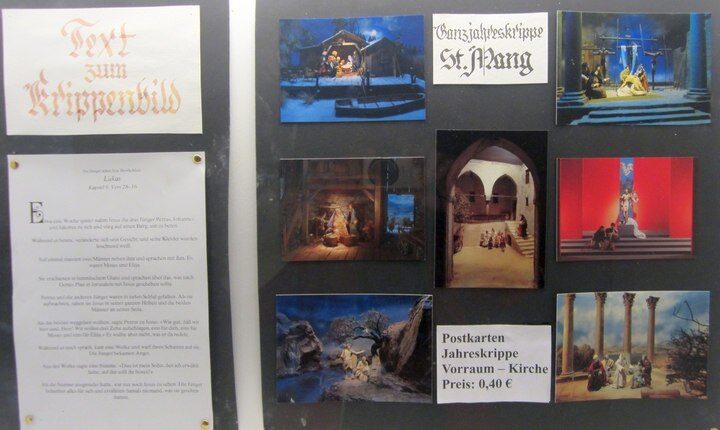
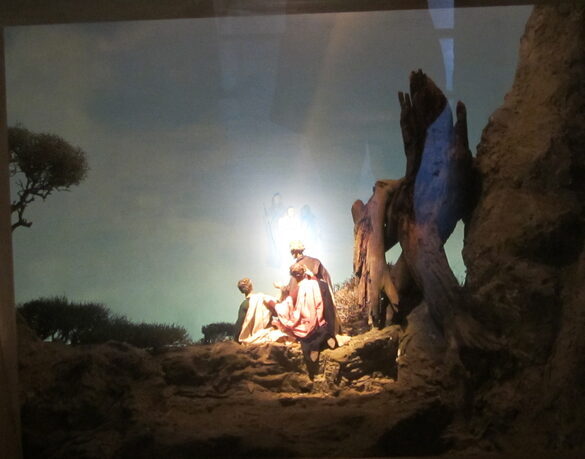


The scene above shows Our Lord at his Transfiguration.
After you have visited the crib you will notice an altar:
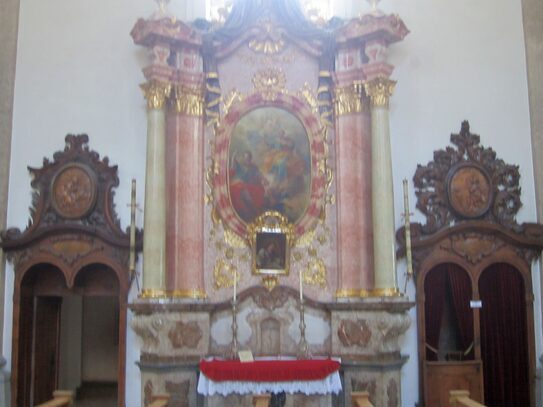

and a confessional box each side of it before you come to the Sacred Heart Altar:
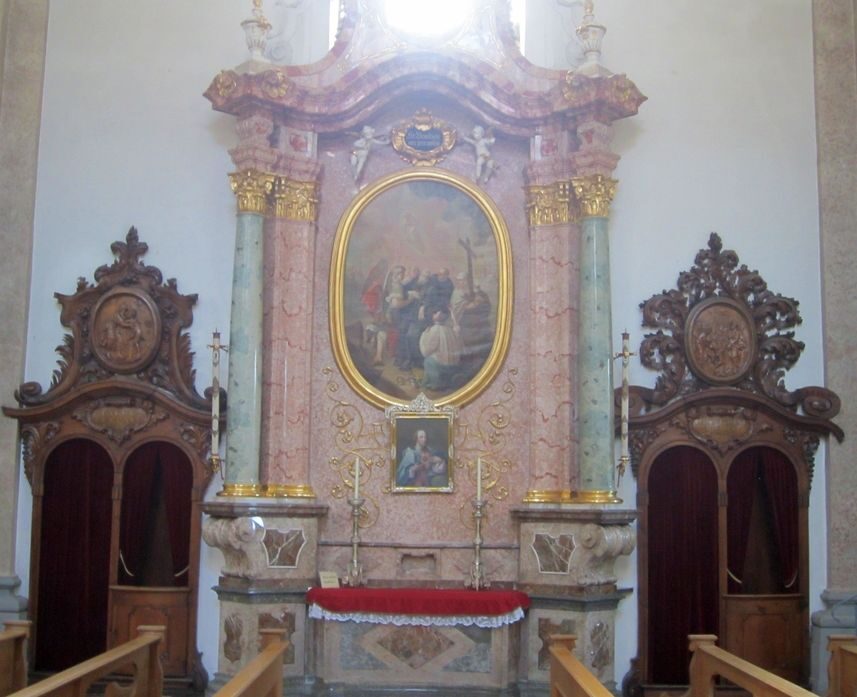

Then there is another confessional. Each confessional has a different scene engraved on it and different wording.
At the top of a small flight of steps the Shine of Blessed Francis Xavier Seelos is to be found beside the St Michael the Archangel Altar:
Turn left and you enter the gallery below the main organ:
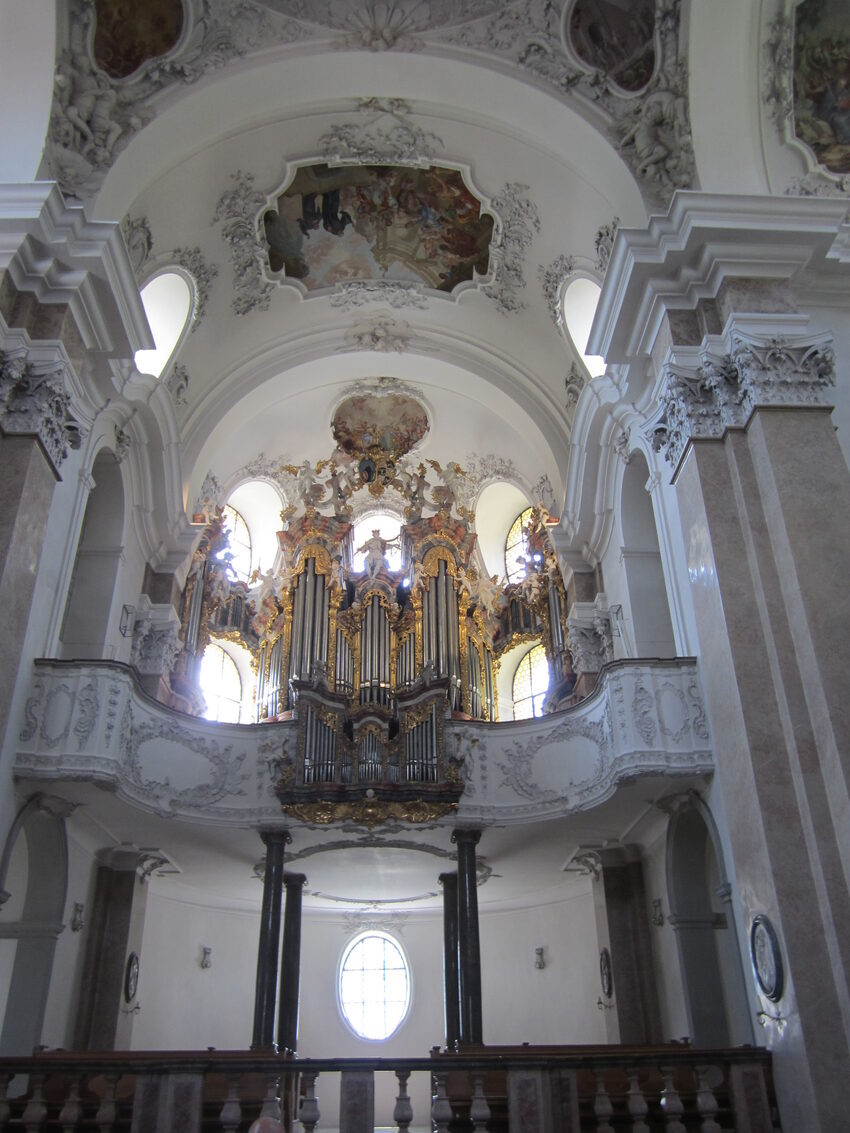

From the gallery you will see the rear entrance of the Basilica. It is here that the blessed doors by artist Erwin Wiegerling, showing the Liturgical Year of the Church, can be found. These were blessed by Bishop Walter Mixa, Bishop of Augsburg and Bishop to the German Military on 9th September 2007.

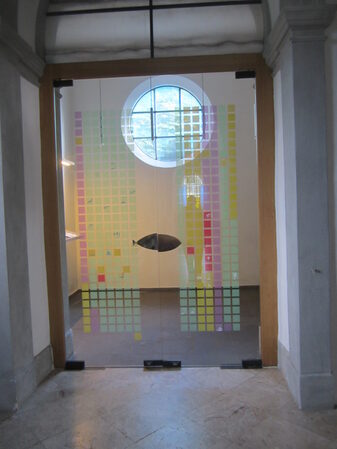
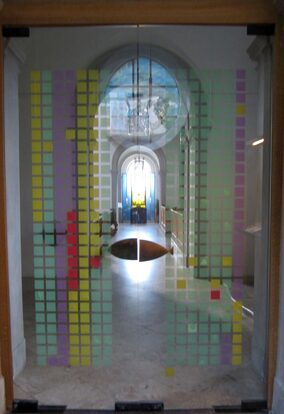
The Bapistry
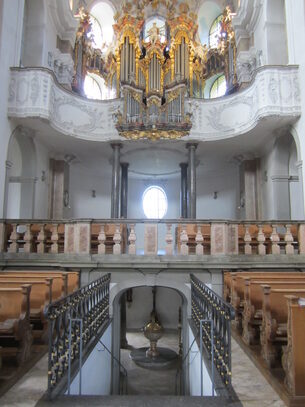
The Baptistry is located under the back gallery. This is the Baptismal Font where Blessed Francis Xavier Seelos was baptized on 11th January 1819.
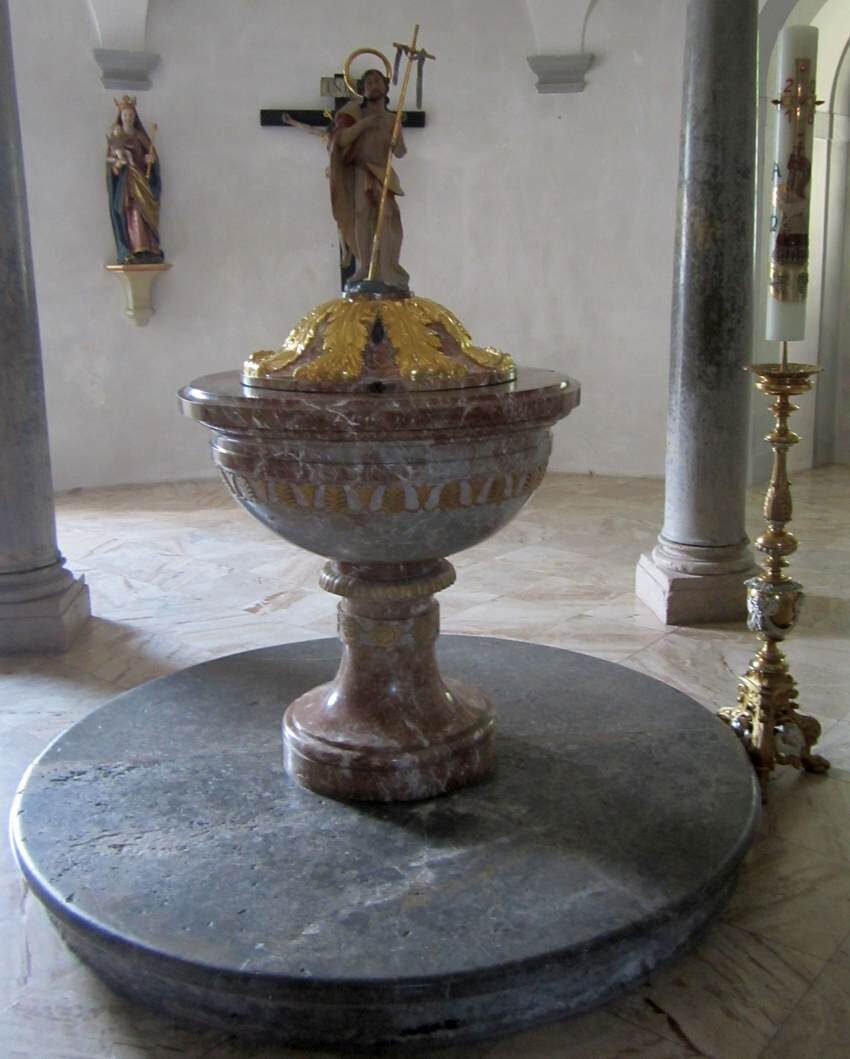

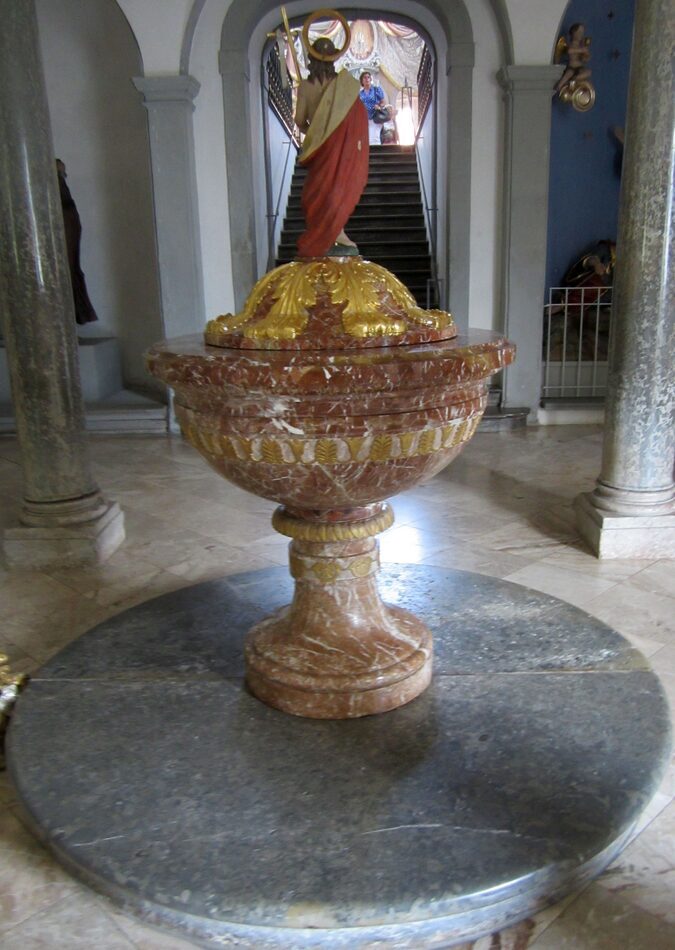
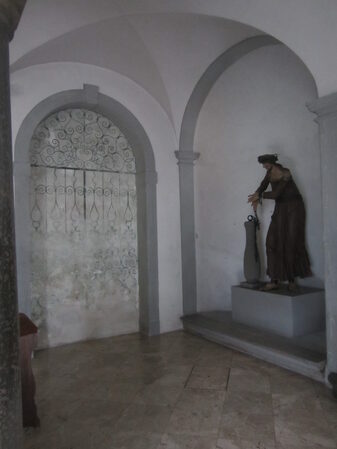
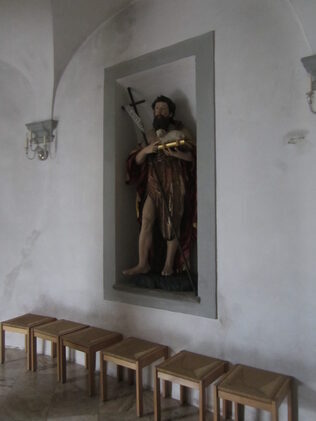
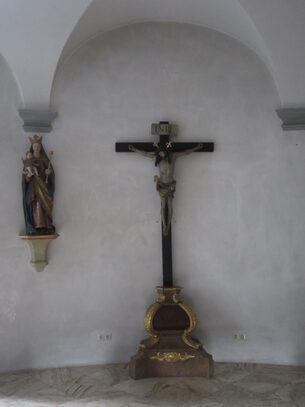
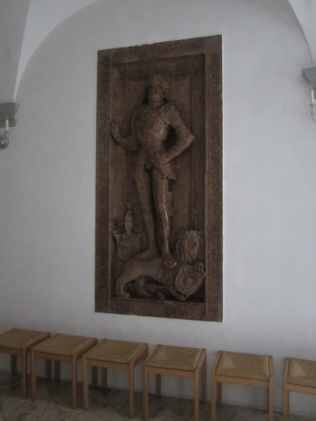
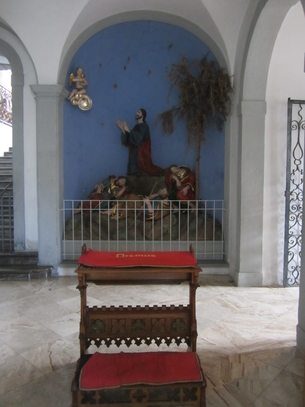

St. Mang Shrine located in the Baptistry:
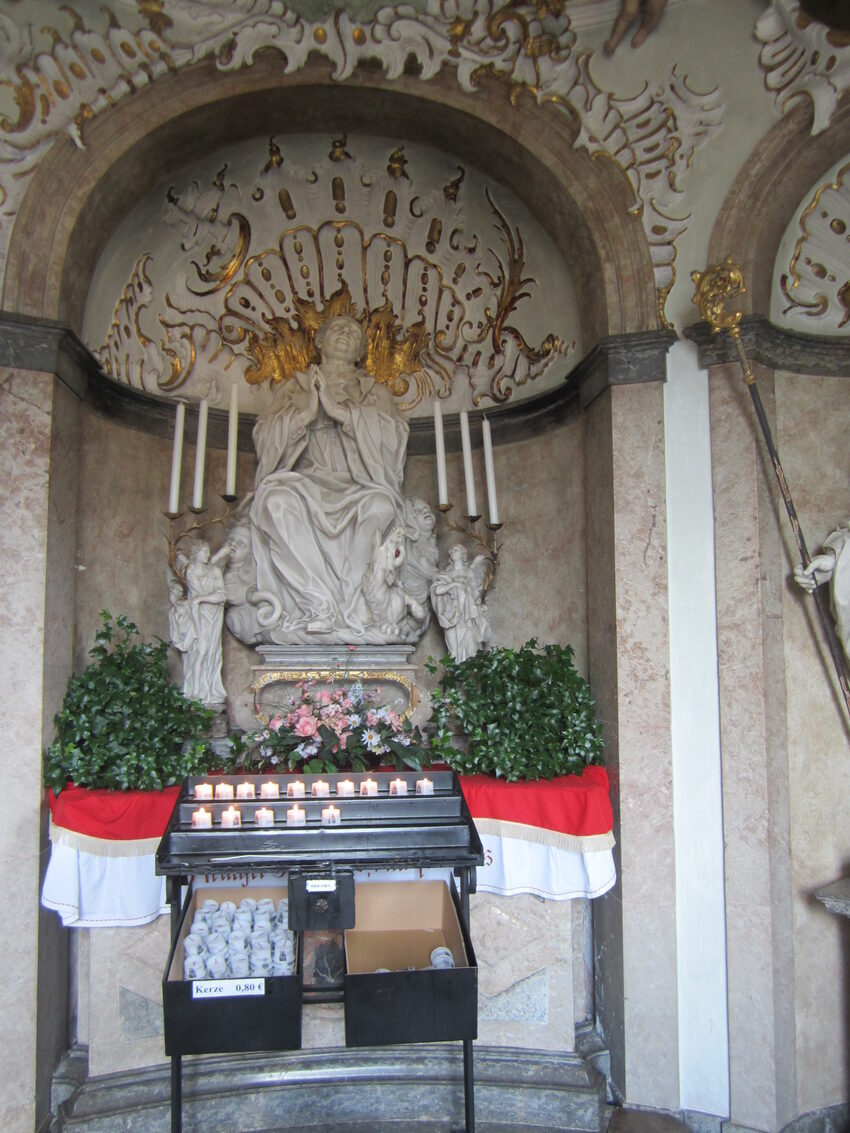

Leaving the Baptistry turn to your left and you find a confessional box each side of the altar to the Immaculate heart of Mary:
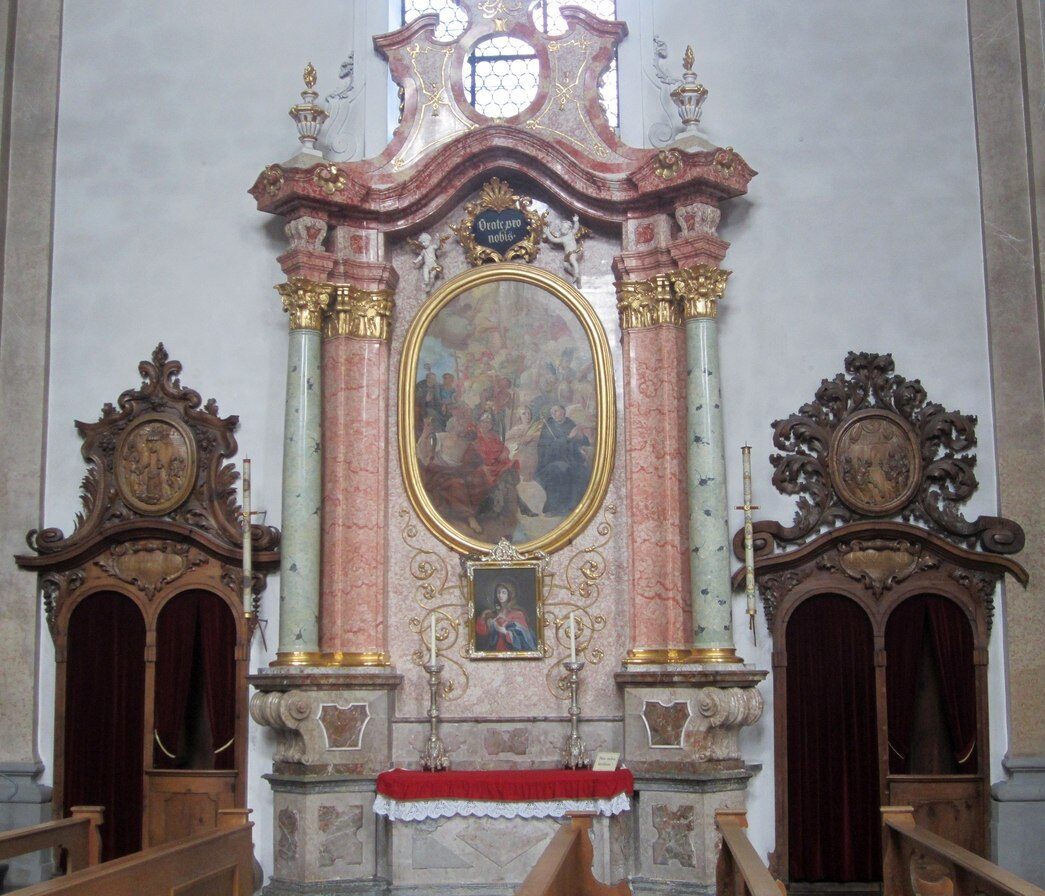

Walk further down the aisle and you come to another altar dedicated to St Joseph and another confessional box:
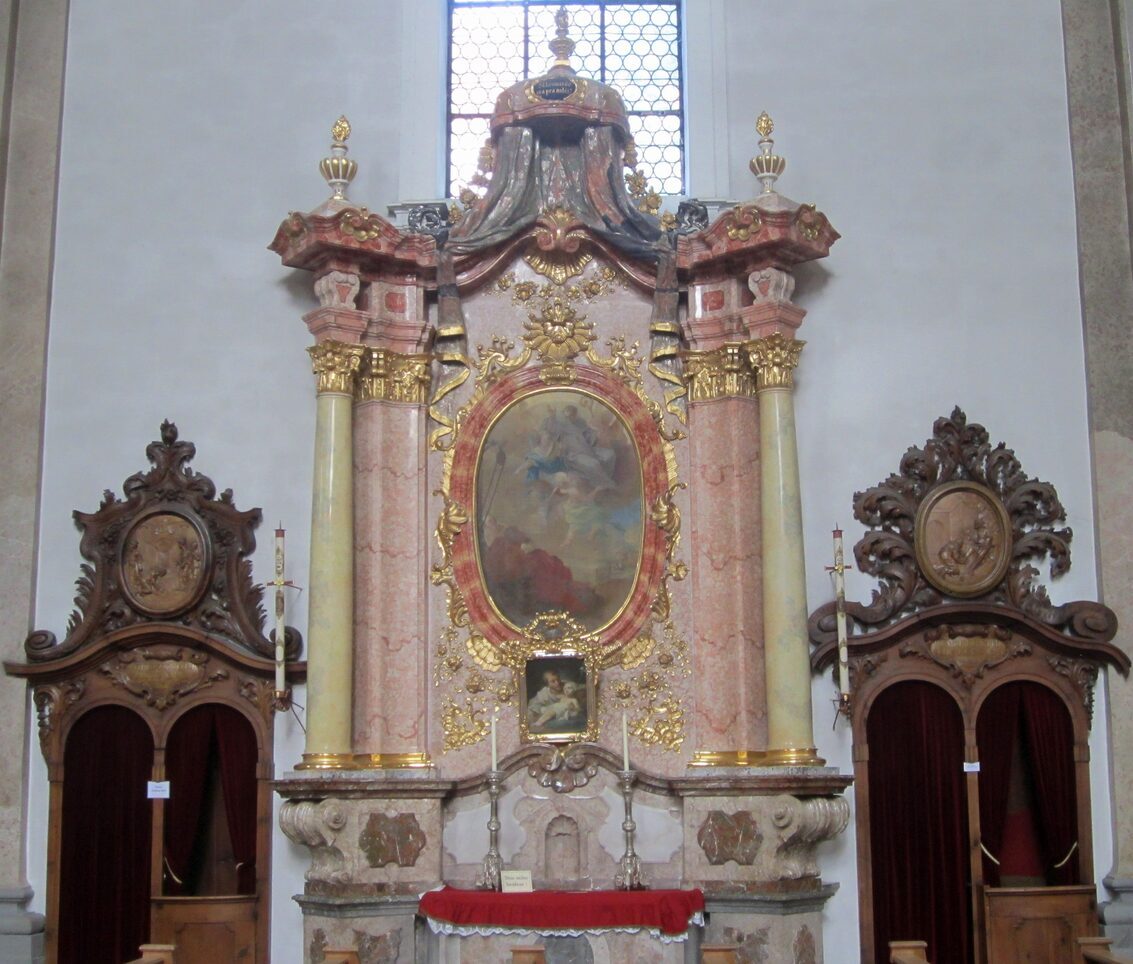

Finally as you come to the main entrance will find the Altar of Our Blessed Lady where the Seelos Shrine used to be:
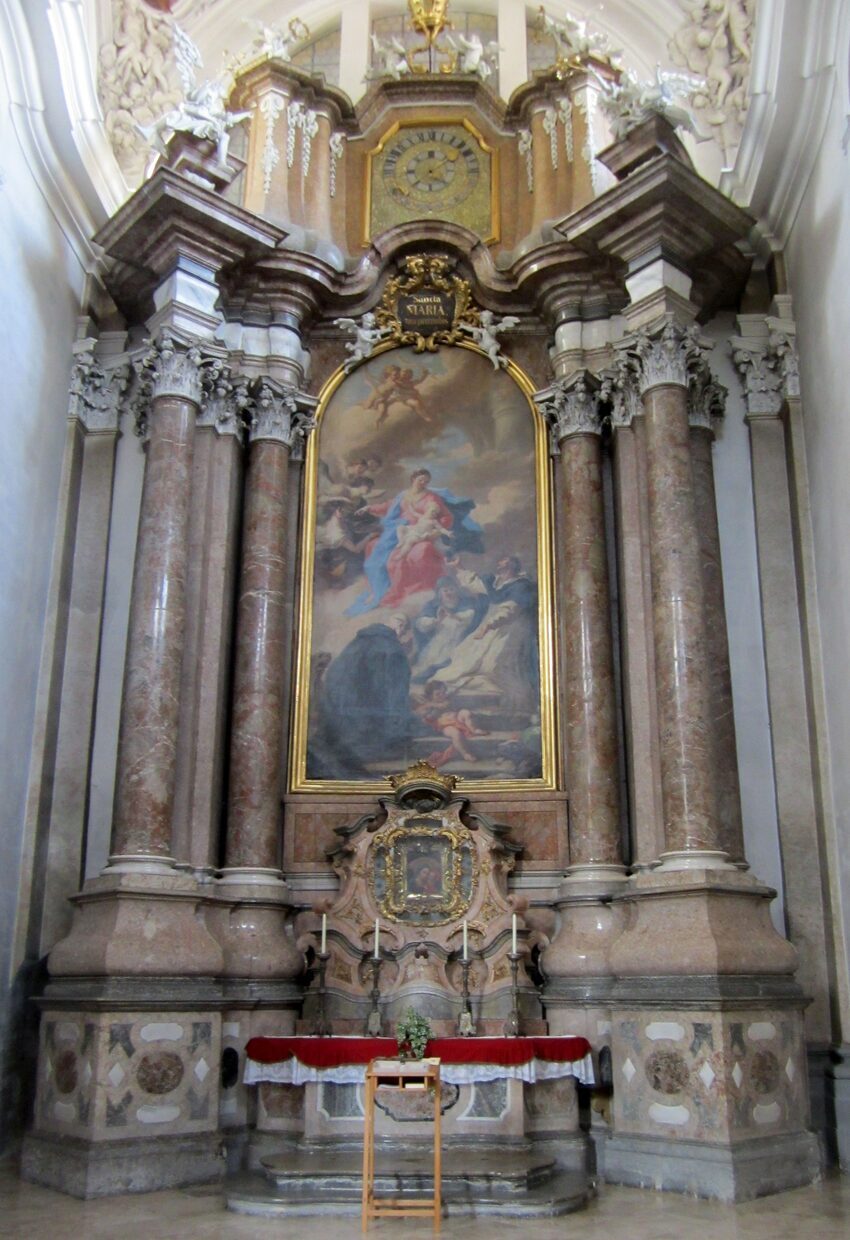

Notice the old mechanical clock above the Lady Altar.
St. Mang was built over the original chapel built by the Apostle of the Allgäu.
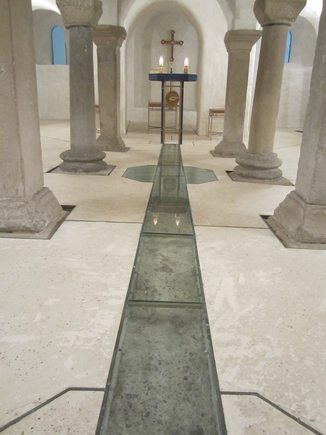

St. Magnus (Mang) is the Patron Saint of the Allgäu area. He lived in Füssen and his feast day is the 6th September.
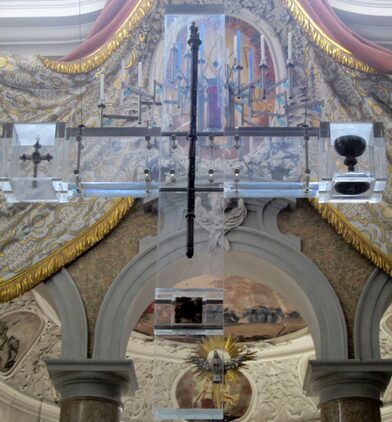
The staff and chalice and other relics of St. Mang hang above the main altar in the basilica.
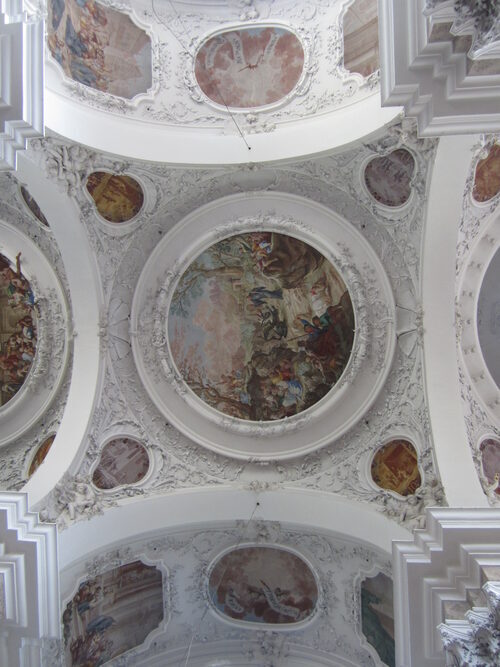

Legend has it that St. Mang got rid of a terrible dragon which was frightening the residents of Roßhaupten about 8 kilometres away from Füssen.
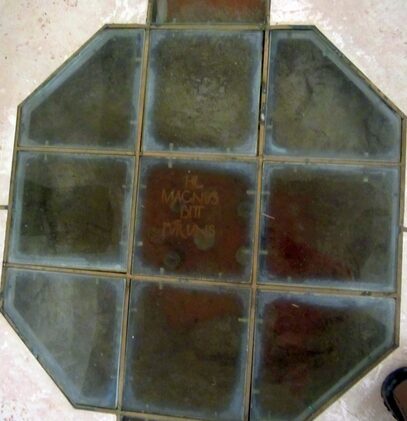

The bones of St. Magnus were buried in his own little Chapel he had built. But in 850 the bones were transferred to the new grave in the crypt. One piece of bone was transferred to St. Gallen in Switzerland. 250 years later around 1100 all the bones of the Saint disappeared.They got a splinter of the saint's bone from St. Gallen and it is now kept as a relic in the glass Cross over the main alter of the Basilica (see photo above of the glass cross ).
In 2007 the Bishop of Augsburg, Bishop Walter Mixa, was the main celebrant at the Patronal Mass held on Sunday 9th September at 1900hrs in St. Mang Basilica. Mass was followed by a torch light procession around the old part of the city then veneration of the saint's relics took place.
St. Mang climbed the highest mountain nearby, SAULING.
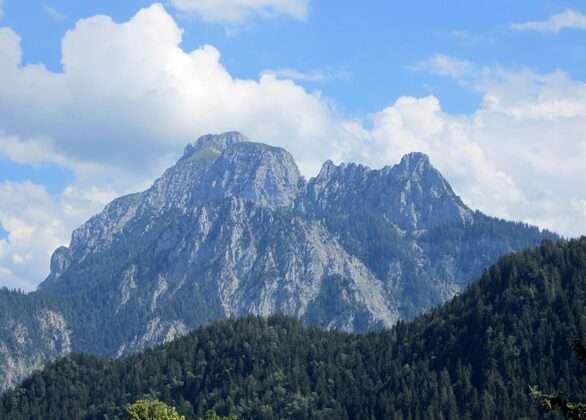

For more information about the legends and his life we are grateful to Haines for allowing us to use their information below.
Biography of St. Mangus
Although lesser known than the Saint Magnus of the Orkneys and Scotland, there is another saint Magnus - this Magnus, an alpine saint. Near Füssen and Waltenhofen in the Allgäu region in Germany, Magnus fought serpents and dragons. He became a popular saint and was often invoked to banish all kinds of vermin.
St. Magnus was a monk of the monastery St. Gallen (Switzerland). About his life we know only few reliable data. Too much has been distorted in later legends. Some say that he was born around 700 AD and died on September, 6th 772. According to others 750 was the year of his death. Neither do we know anything about his nationality. The "official" Vita St. Magni claims that he was Irish, but some sources dispute this, stating that he was of Alemannian or Romanic descent.
Together with his companions Tozzo and Theodor, Magnus left St. Gallen to prosylete the heathens of the Allgäu region (Southern Germany). Bregenz, at the eastern shore of Lake Bodan (Lake Constance), he reached first. During his short stay he healed a blind man who accompanied him on his further travels. Later he went to Kempten, then a nearly deserted and (neo-) pagan town. Magnus there restored Christianity and (re-) built a church. Theodor was left there as a priest while Magnus and Tozzo travelled on and soon reached the surroundings of Füssen. A church was built in the nearby village Waltenhofen. Later he founded the (Benedictine) monastery of Füssen where he died after a long life of worship. During his peregrinatio Magnus worked many miracles.
Kempten was deserted when Magnus arrived there. No one dared to stay even for one night, for this place was haunted by all kinds of serpents and worms. Magnus neglected his companions´ warnings and took up his abode right outside the town. Not for long they had kneeled down for prayer when a huge serpent - named Boas - rushed towards them. Tozzo and the formerly blind man climbed a nearby tree to get out of this peril. But Magnus and Theodor awaited the beast making the sign of the cross. Magnus grasped a cross and the holy staff of St. Gallus (who according to the Vita was his teacher).
Facing the worm, he ordered his foe to lie still. And he commanded the devil, who hided inside the brute, to kill Boas. With these words he took the magical staff and smashed the worm's head. With the death of their leader all foul breed flied from the town, so that it could be inhabited by Christians once more. Magnus and his companions built a small church and re-erected the parish. Peasants from the surrounding areas were baptized by Tozzo. He and Magnus also banished a tribe of demons.
Kempten is one of the oldest settlement in that area. It was founded by the Romans in the first half of the first century AD. At the beginning of the 4th century it already housed a small Christian parish (whose church had been excavated in 1939). This changed when the roman province Rhaetia was conquered by the Alemannians and Kempten became pagan again. The ensuing centuries saw a struggle for prevalence between Alemannians and Franconians which escalated during the first half of the 8th century. Surely Kempten suffered from these fights and was at least partly destroyed. In 746 the Frankonians invited their enemies to hold peace negotiations in Cannstatt near Stuttgart. The Alemannians trusted them and arrived unarmed. Too late they realized the ambush. Nearly their whole nobility was killed. Southern Germany was soon conquered by the Frankonians. With the new rulers christianity reestablished itself. But still paganism prevailed in the more rural areas. Kempten was such a place. Before Magnus' arrival no one dared to expell or kill a snake. They were regarded as guises of benevolent spirits or (as in the case of Boas) of gods. Christianity cursed them as demons and devils. Thus killing Boas was a highly symbolic deed, similar to Bonifazius' cutting down Donar's holy oak!: Even a pagan god (or the devil in christian terminology) had to subjugate himself under St. Magnus and the powers of the cross.
Leaving Theodor behind Magnus turned towards Füssen (now just a few kilometers across the Tyrolian border). He met his second dragon in a narrow valley called Rosshaupten. That beast allowed no one to pass. Magnus decided to stay there for the night, hoping that the Lord would hear his prayers and sooth the brute. Although Tozzo was frightened, he did not dare to leave his master. Magnus put a piece of holy bread into his pocket, took resin and pitch in his hand and hung a chain with a cross around neck. In his other hand he held the magical staff of St. Gallus. Near the lair of the dragon he ate a small piece of the holy bread and made the sign of the cross. As soon as the dragon noticed the intruder he rushed forth to devour him. But Magnus - praying to the Lord - threw resin and pitch into the beast's throat. The dragon was burnt to death from inside.
A local legend reports that Magnus and Tozzo afterwards had a look at the worm's cave. In front of it they found a tree full of tasty, ripe apples. Around this tree (the only living thing in the desolation of the dragon) Magnus built a monastery. According to the official Vita, however, that apple tree grew some kilometers apart in a place today known as Waltenhofen. There, Magnus erected a church (which Tozzo attended as a priest). Soon afterwards he founded the (today Benedictine) monastery at Füssen.
It is worth pondering over the name Rosshaupten. Etymologically it is derived from the German words Ross = horse and Haupt = head or skull. A common explanation was that from this point onward the use of horses was impossible. Riders had to leave them behind and proceeded on foot. However, it is more probable that the name refers to a pagan sanctuary where horses were offered to the old German god Wodan. A local myth mentions a headless horse rushing down a hill. Halfway it met a beheaded bull running in the opposite direction. After a short fight they trampled each other into the ground, but then suddenly forgot their struggle and ran off where they had come from. Around 1800 peasants gave the following explanation (which is not included in the official Vita of the saint): Magnus once came upon a pagan ceremony in which horses and bulls were offered. He ordered the already beheaded animals to run off. Thus he convinced the heathens of the powers of the cross. This implies that at the end of the 18th century the sacrificing of horses was still part of public perception. During the first half of the ensuing century peasants made other use of dried skulls of horses and bulls. They kept them in the stables to prevent thunderstrikes and banish pestilence.
Magnus became a very popular saint. Besides Rosshaupten 14 other villages claim to be the location of a dragon fight. In most cases these legends are just plagiarisms of the "official" version.
Ronsberg is one of these villages. Its dark woods were terrorized by three atroceous dragons, remnants of a godless, pagan time. Neither man nor cattle they spared. At last a daring man was found who promised to negotiate with the beasts. Using some magic powers he succeeded in making a bargain. The dragons should spare the village and seek their prey elsewhere in the adjacent districts. For a while all went well. But one day the assigned boroughs had been deprived of every living creature, and the dragons turned towards Ronsberg once more. This time the sorcerer had no opportunity to negotiate: He was devoured at once. The next day the peasants offered an old cow. Although it is hard to imagine that only one cow could satiate three dragons, the trick worked: The beasts got tired and fell asleep. A brave messenger was sent out for St. Mang. The holy man had just tamed a tribe of bears (another motive derived from his vita) and taught them to hunt demons. With those strange companions he approached Ronsberg. The bears killed the dragons, Magnus lit the forest and their lairs went up in flames.
In another, very strange legend Magnus had killed several worms but spared one hatchling because of his innocence. This young dragon was educated at Kierwang and helped the peasants to clear the woodland. He not only cut down the trees but also sawed them into pieces. He carried wood and stone, cleared off the snow and even helped in the construction of new roads. He had just one fault: Hay and straw he despised and never he got satiated by mice and rats alone. So now and then he stole a calf from the pastures. This was too much for the avaricious peasants. They decided to chop him into pieces while he lay asleep. But when the first stroke hit his breast a strong jet of milk issued from the wound. It was the best milk you could think of! The peasants realized that this dragon was worth its weight in gold and gave more milk than all cows of the village together. They begged his pardon - in vain. The dragon felt insulted. He left and was seen never again.
Oldest Fresco in Germany
The Oldest Fresco in Germany is located in the crypt of St. Mang. It shows St. Gallus & St. Mang. It is from the Teichenau School and is reckoned to have been painted around 980.
